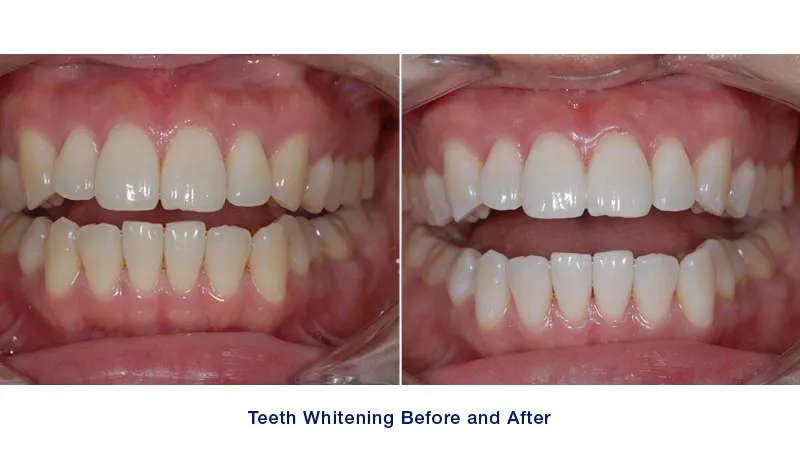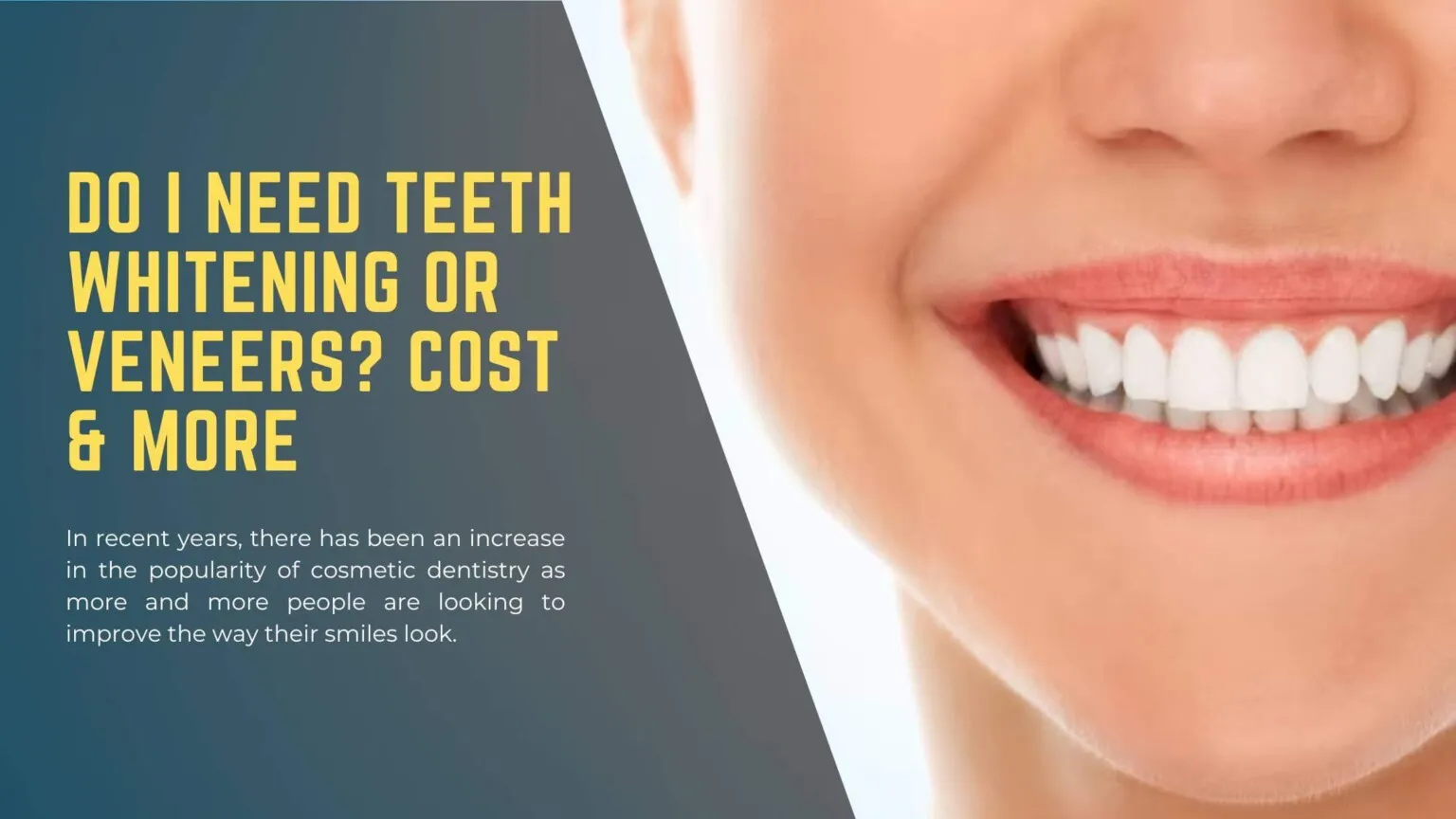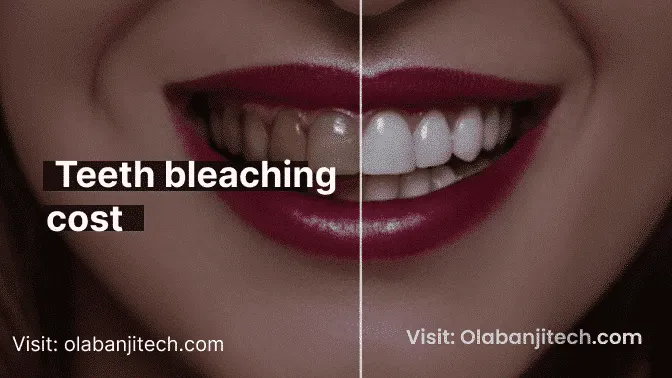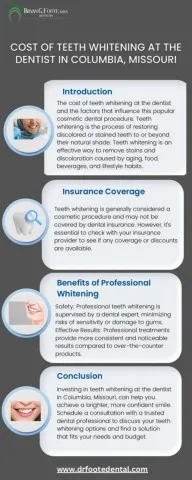What is Tooth Whitening
Tooth whitening, also known as teeth whitening, is a cosmetic dental procedure designed to lighten the shade of your teeth. It is one of the most popular and effective ways to enhance your smile, boost your confidence, and achieve a brighter, more youthful appearance. The process involves removing stains and discoloration from the tooth surface, resulting in a noticeably whiter smile. The methods used vary from professional treatments performed by dentists to over-the-counter products available for at-home use. Understanding the different options, their effectiveness, and their costs is crucial for anyone considering this procedure. The demand for tooth whitening has surged in recent years, with people increasingly prioritizing aesthetic improvements in their dental care. Knowing the cost and factors involved is very important.
Why Consider Tooth Whitening
There are numerous reasons why people opt for tooth whitening. Staining and discoloration can occur due to various factors, including aging, genetics, dietary habits (such as coffee, tea, and red wine consumption), and tobacco use. Even certain medications can lead to tooth discoloration. Tooth whitening can effectively reverse these effects, restoring your teeth to a brighter, more appealing shade. Beyond the aesthetic benefits, tooth whitening can also boost self-esteem and confidence. A brighter smile can make you feel more approachable, and self-assured in social and professional settings. Furthermore, it’s a relatively quick and non-invasive procedure, making it an attractive option for those seeking a cosmetic enhancement without significant downtime or discomfort. Ultimately, the decision to undergo tooth whitening often stems from a desire to improve your overall appearance and self-perception.
Tooth Whitening Methods

Tooth whitening methods can generally be categorized into two main groups in-office treatments and at-home treatments. In-office whitening, also known as professional whitening, is performed by a dentist. It typically involves the use of a high-concentration bleaching agent, applied directly to the teeth. The dentist may also use a special light or laser to accelerate the whitening process, leading to immediate and dramatic results in a single session. At-home whitening, on the other hand, involves the use of custom-fitted trays or strips, filled with a lower concentration of bleaching agent. This method allows you to whiten your teeth at your convenience over a period of time. The choice between in-office and at-home methods depends on several factors, including your desired level of whitening, your budget, and your lifestyle. It’s crucial to consult with your dentist to determine which method is best suited for your specific needs and oral health.
In-Office Whitening
In-office tooth whitening provides the most immediate and significant results. During this procedure, your dentist will first clean your teeth to remove any plaque or debris. They then apply a high-concentration whitening gel to your teeth. This gel typically contains a strong bleaching agent, such as hydrogen peroxide. To enhance the whitening process, dentists may use a special light or laser, which activates the bleaching agent and speeds up the process. The entire procedure usually takes about one to two hours, and you can leave the office with a noticeably whiter smile. In-office whitening is ideal for individuals seeking rapid results or those with severe staining. The dentist can also monitor the process and ensure your safety, minimizing the risk of any potential side effects. It is often the more expensive option, but the convenience and effectiveness make it a popular choice for many patients looking for significant improvements.
Cost of In-Office Whitening
The average cost of in-office tooth whitening can vary depending on several factors, but you can generally expect to pay more than for at-home treatments. The cost typically ranges from several hundred to over a thousand dollars per session. This price includes the dentist’s fees, the cost of the whitening gel, and any additional services, such as cleaning and preparation. Location plays a significant role in determining the price; treatments in major cities or affluent areas tend to be more expensive. The specific type of whitening system used by the dentist can also affect the cost. Some systems use advanced technologies or proprietary formulas, which may come at a premium. While the initial investment may seem higher, in-office whitening offers the convenience of a single visit and the assurance of professional expertise. Many patients consider the investment worthwhile for the significant and immediate results.
At-Home Whitening

At-home tooth whitening offers a more affordable and convenient alternative to in-office treatments. There are several options available for at-home whitening, including custom-fitted trays provided by your dentist and over-the-counter whitening strips, gels, and toothpastes. Custom trays are made by your dentist, who takes impressions of your teeth to create a perfect fit. You then apply a whitening gel to the trays and wear them for a specified amount of time each day or night, as directed by your dentist. Over-the-counter products are readily available and typically involve the use of strips or gels that adhere to your teeth. While at-home methods generally take longer to produce results than in-office treatments, they can still effectively lighten your teeth over a few weeks or months. The level of whitening may also be less dramatic compared to professional treatments, but at-home whitening is a cost-effective option for maintaining a brighter smile.
Cost of At-Home Whitening
The cost of at-home tooth whitening is considerably lower than in-office treatments, making it an attractive option for many individuals. The price of at-home whitening products varies based on the type and brand. Over-the-counter whitening strips and gels are generally the most affordable, with costs ranging from a few dollars to a few hundred dollars per kit. Custom-fitted trays, provided by your dentist, may be slightly more expensive due to the professional services involved. However, they still offer significant cost savings compared to in-office treatments. Factors affecting the cost include the brand, the concentration of the whitening agent, and the number of treatments included in the kit. The availability of deals and discounts also influences the final price. By choosing at-home whitening, you can achieve noticeable results without the hefty price tag of professional procedures, making it an accessible way to enhance your smile on a budget.
Factors Affecting Tooth Whitening Cost
Several factors influence the cost of tooth whitening, regardless of whether you choose in-office or at-home methods. Understanding these factors can help you make an informed decision and budget accordingly. The type of treatment is a primary cost determinant; professional whitening is generally more expensive than at-home options due to the use of stronger bleaching agents and the expertise of a dental professional. The extent of the staining or discoloration also plays a role. Severe staining may require more treatments or stronger whitening agents, increasing the overall cost. The location of the dental practice or the retailer also affects the price; treatments in urban areas tend to be more costly. Lastly, the specific brand or technology used can impact the price. Some whitening systems incorporate advanced features or proprietary formulas, leading to higher costs. Carefully considering these factors will help you determine the most cost-effective approach for your tooth whitening goals.
Location and Provider

The geographic location of your dental practice or the retailer significantly affects the cost of tooth whitening. As a general rule, dental services in major metropolitan areas are often more expensive than those in smaller towns or rural areas. This is primarily due to higher operating costs, including rent, utilities, and staffing. The provider you choose also impacts the price. Dentists with more experience or specialized training may charge more for their services. Similarly, the reputation of the practice can influence the cost; well-established and highly-rated dental offices tend to have higher fees. When considering your options, it’s essential to research the average prices in your area and compare the fees of different providers. While cost is a key factor, you should also consider the quality of care and the dentist’s experience. Finding a provider who offers a balance of affordability, expertise, and excellent service is the best approach.
The Extent of Staining
The severity of your tooth staining or discoloration is a critical factor in determining the cost of tooth whitening. If your teeth have only minor stains or discoloration, a less potent whitening treatment may be sufficient, resulting in lower overall costs. However, if you have severe stains caused by factors like aging, tobacco use, or certain medications, you might require more intensive treatments. This can include multiple in-office sessions, the use of stronger whitening agents, or more prolonged at-home treatments. The presence of intrinsic stains, which originate from within the tooth structure, can also affect the cost; these stains are often more challenging to remove than extrinsic stains, which are on the surface. Your dentist will assess the extent of your staining during a consultation and recommend a treatment plan accordingly. The more significant the staining, the higher the potential cost of achieving your desired level of whitening.
Other Considerations
Additional factors can influence the overall cost of tooth whitening. The need for preparatory dental work can add to your expenses. For instance, if you have cavities or gum disease, your dentist may recommend treating these conditions before starting the whitening process. Such treatments will add to the total cost. The type of whitening product or technology used can also affect the price. Some advanced systems or proprietary formulas come with a higher price tag. Furthermore, the number of treatments required to achieve your desired results will impact the overall cost. The more sessions or kits you need, the more you’ll likely spend. Maintenance is another consideration; after whitening your teeth, you may need to use maintenance products to keep your teeth bright. Therefore, when estimating the cost of tooth whitening, it’s essential to consider all related expenses, not just the price of the initial treatment itself.
